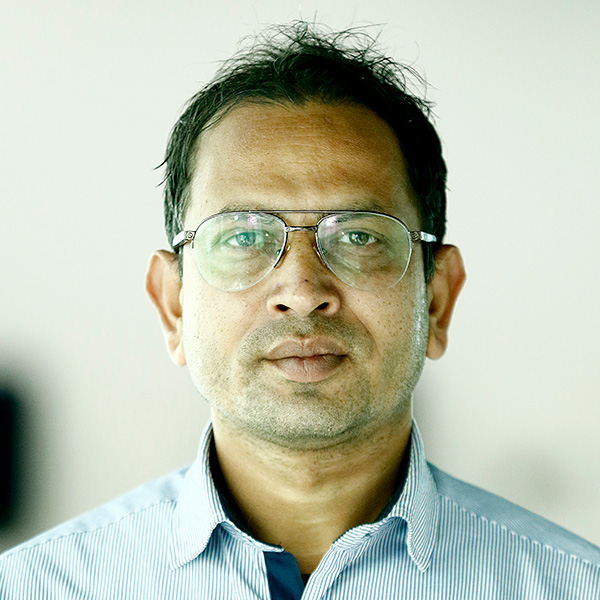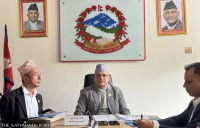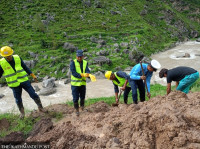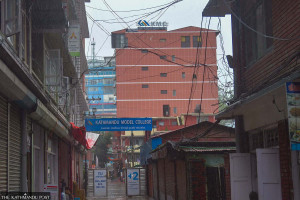National
Tourism minister vows to build Nijgadh airport at any cost
All issues will be resolved, promised Yogesh Bhattarai, but environmental activists are unconvinced.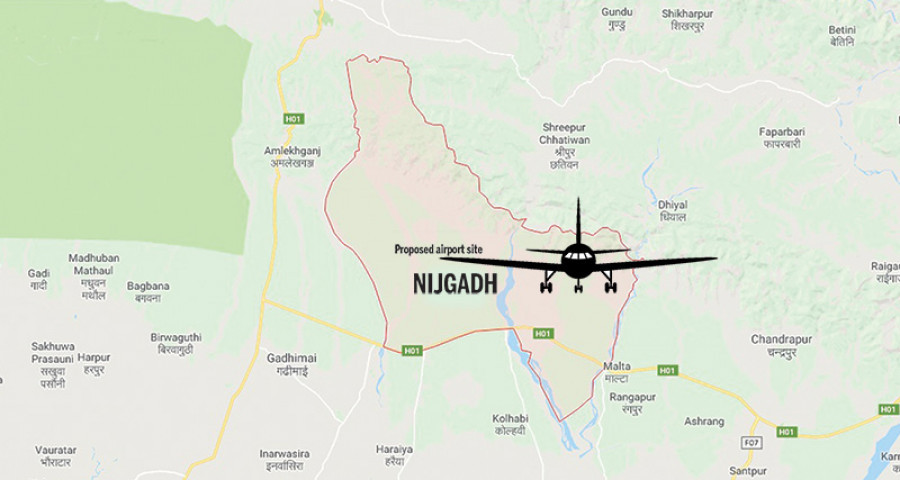
Sangam Prasain
Despite long-running protests by environmental activists, Yogesh Bhattarai, the newly-appointed tourism minister, has said that the construction of the Nijgadh International Airport in Bara will go ahead at any cost.
“There is no alternative to the Nijgadh International Airport. It will be built where it has been proposed to be built,” Bhattarai told a news conference on Wednesday. “The foundation stone for the airport will be laid by 2019. Yes, there is controversy, and many questions have been raised, particularly over the environment. But all these issues will be resolved.”
But environmental activists are unconvinced, as the planned airport will destroy forests, irrigation systems and wildlife habitats.
Vijay Kumar Singh, an environmentalist and Chure conservation expert, told the Post that the government should not work haphazardly on such mega projects.
“It’s better to move ahead after proper consultation with civil society and environmentalists about social and environmental impacts and the economic benefit so that the government doesn't have to regret later,” said Singh.
A detailed study needs to be prepared on how trees will be cut down and how they will be planted to minimise the environment impact. “The relocation of the settlement of Tangia Basti is also equally important,” he said.
The Nijgadh airport will require 2.4 million trees to be cut down, according to an environmental and social impact assessment carried out by the Tourism Ministry in February 2017. Despite criticism, the Environment Ministry approved the assessment in May last year, under the condition that 25 saplings are planted for every tree that is cut down. That would require 60 million saplings to be planted over the course of the project construction, which activists say is highly unlikely.
The project will also displace 1,476 people from Tangia Basti. According to Bhattarai, those displaced will either be offered cash compensation or relocation. But residents say that no one has consulted with them yet.
Sanjiv Gautam, former director general of the Civil Aviation Authority of Nepal, said that the government should fulfil the conditions laid down by the environmental and social impact assessment report.
“Only after these two issues are settled should the government move ahead towards site clearance and cutting down trees,” said Gautam.
The conflict between development and destruction regarding the Nijgadh airport comes up in numerous international forums, including a recent World Bank meeting in Singapore, he said. Prime Minister KP Sharma Oli was also questioned about it by the BBC during his trip to Europe earlier this year.
The $1.21 billion project, located 175 km south of Kathmandu, has been in the works since 1995. Then, a government pre-feasibility survey of potential locations for an alternative to Kathmandu’s Tribhuvan International Airport had identified Nijgadh as the most viable among eight other options.
The plan to build a new airport gathered momentum in 2010, when the government awarded the contract to carry out a detailed feasibility study for the airport to a South Korean company. But the project’s priority kept changing, as a succession of short-lived governments came and went.
Many potential investors came forward, but governments changed their minds often, saying Nepal itself was capable of investing in critical infrastructure projects.
Nijgadh returned to the top of the agenda following the crash landing of a Turkish Airlines plane at Kathmandu airport in March 2015, forcing the airport shut for four days, resulting in cancellation of hundreds of flights to and from Kathmandu.
Another reason for renewed interest in Nijgadh is congestion at the country’s sole international airport, which currently handles 7 million domestic and international passengers annually. Nijgadh has been envisioned as a modern airport, the biggest in South Asia in terms of area, covering 8,045.79 hectares once completed.
Nijgadh International Airport is currently in the project bank of Investment Board Nepal. It received the highest number of applications from prospective investors after being showcased at the Nepal Investment Summit in March, said Maha Prasad Adhikari, chief executive officer of Investment Board Nepal.
Adhikari said they had received seven investment proposals and that the evaluation of proposals was in the final stage.
“We have proposed a public-private-partnership modality, but the government has the option to develop it under an engineering, procurement and construction or other financing modality,” he said. The project will be awarded to the bidder who gives the 'best deal' among the seven investment applications.
Two reports about the project have been prepared so far. A detailed feasibility study prepared by Landmark Worldwide Company of South Korea in 2011 had estimated a price tag of Rs65 billion for the first phase. Five years later, in 2016, the Civil Aviation Authority of Nepal estimated that the proposed airport could be constructed at a cost of Rs121 billion.
As per the Civil Aviation Authority of Nepal, two years will be spent for site clearance works in the first phase, and then another five years will be spent on constructing the airport, which will have a 3,600-metre-long and 60-metre-wide runway.
After the first phase of construction is complete, the airport will be able to handle 15 million passengers annually and accommodate the Airbus A380 super jumbo, according to the South Korean study. By the end of the third phase, the airport will have another parallel runway enabling it to handle 60 million passengers annually.




 23.6°C Kathmandu
23.6°C Kathmandu

